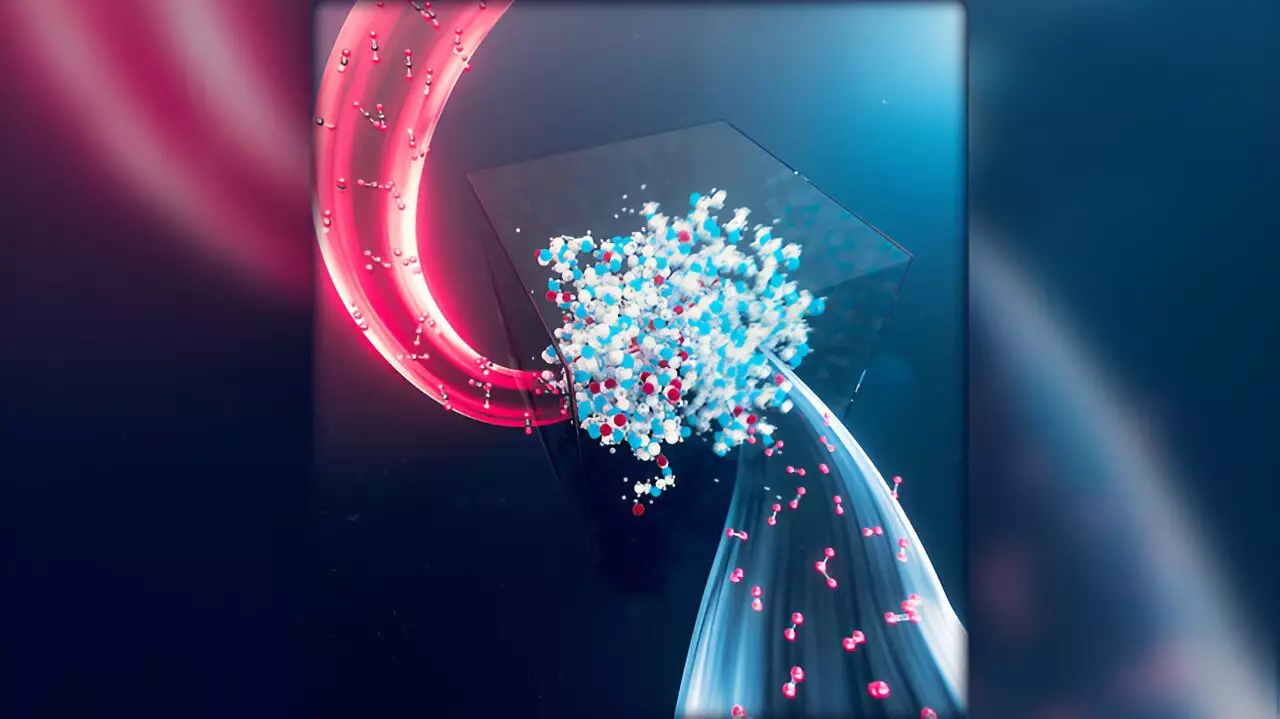In a notable collaboration between researchers at Lawrence Livermore National Laboratory (LLNL) and the Georgia Institute of Technology, a groundbreaking study has unveiled critical insights into the stability of amine-functionalized porous solid materials. These materials serve as key elements in direct air capture (DAC) technologies designed to mitigate carbon emissions. Published in the esteemed Journal of the American Chemical Society, this research delves into the intricate dynamics between carbon dioxide (CO2) and poly(ethylenimine) sorbents, which are pivotal for effective carbon capture under low CO2 concentrations. The findings promise to revolutionize the current understanding of these materials, paving the way for more robust and efficient DAC systems.
The collaborative research led by principal investigator Simon Pang reveals that CO2 plays a dual role in influencing the oxidative degradation of poly(ethylenimine) sorbents. While amine-based sorbents are prized for their unmatched ability to absorb CO2, their longevity has been hindered by oxidative degradation processes. Through meticulous investigation, researchers have provided clarity on how CO2 complicates these processes, effectively reconciling previously contradictory data in existing scientific literature. The study highlights that the oxidation kinetics of these sorbents manifest a non-linear relationship with CO2 variables, including temperature and concentration, underscoring the need to reevaluate existing models of sorbent behavior.
The implications of this research extend far beyond mere academic interest. By illuminating the conflicting roles of CO2—both catalyzing oxidation reactions and curbing polymer mobility—the findings offer actionable strategies to enhance the lifespan of sorbents used in DAC technologies. Lead author Sichi Li emphasizes that understanding these nuanced interactions is key to developing next-generation materials capable of withstanding harsher conditions without significant degradation. The study suggests innovative solutions, including blending sorbents with specific additives or adjusting surface characteristics to combat the degrading effects of acidic environments, thus enhancing the overall durability.
As the world grapples with escalating climate challenges, efficient and sustainable carbon capture technologies become increasingly indispensable. This study’s revelations not only set the stage for advancements in DAC systems but also underline an essential perspective: that a comprehensive understanding of atmospheric components, particularly CO2, is critical in engineering effective carbon capture materials. The collaborative effort showcased by LLNL and Georgia Tech exemplifies the transformative potential of interdisciplinary research in addressing global environmental concerns, creating pathways for innovative solutions to complex problems.
The findings from this research signal a pivotal moment in the evolution of DAC technology. Based on a thorough analysis of CO2’s impact on sorbent stability, scientists are now equipped with the knowledge and tools to forge ahead in developing more reliable and cost-effective carbon capture solutions, ultimately contributing to global climate goals.

